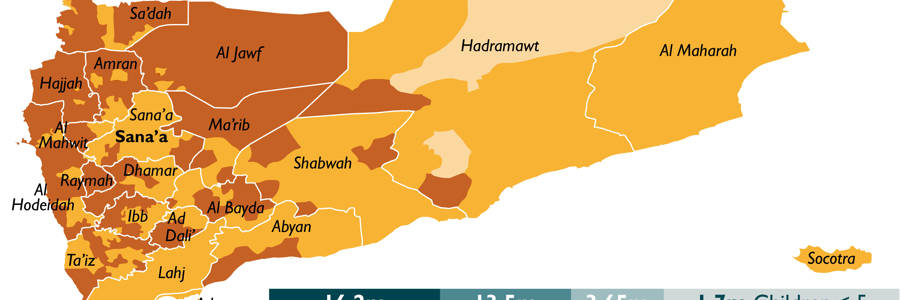What do the recent drone sightings in Denmark and Norway mean?
Posted Thursday, 23 Oct 2025 by Bruno Oliveira Martins

In recent years, drones have caused airport shutdowns all over the world, including in Scandinavia. But the intensity of the response to the recent shutdowns of Oslo’s and Copenhagen’s main airports was unprecedented.
This means that although the perpetrators and their intentions remain unknown, at least officially, the Norwegian and Danish authorities view the incidents as something more serious than irresponsible drone-flying by hobbyists. In Denmark, the issue was taken particularly seriously. Denmark currently holds the rotating presidency of the Council of the EU, and had defined security and defence as the top priority.
This raises the profile of the target. Additionally, as a consequence of Russia’s invasion of Ukraine, Denmark has ended its opt-out on all EU defence programmes. In other words, up until recently, Denmark had decided to stay out of the EU initiatives on defence. But due to the different strategic environment in the continent, it decided that it no longer wanted to be out. All this put together make the Danish government feel that they need to take the incident seriously and need to show determination. Finally, Denmark is also under increased international pressure due to the US’ rhetoric offense on Greenland, and the Government has clearly elevated their profile on foreign policy and security issues, and want to communicate externally that Denmark is not a country to be messed up with.
Over the years, research conducted by the Peace Research Institute Oslo (PRIO) has shown that there is longstanding awareness of Norway’s vulnerability to drones. The Russian threat makes our vulnerability both more dangerous and more obvious. I made this precise point in an op-ed for Aftenposten with the title: “Norway’s vulnerability to drones has been well known. Russia’s war has made that vulnerability more dangerous and more obvious.” That was in October 2022.
Large-scale Russian activity
In the months after Russia invaded Ukraine in 2022, Norway experienced a series of drone-related incidents. These included several sightings of drones close to oil platforms and energy plants, while drone sightings close to airports caused flights to be suspended. In addition, Russian citizens arrested at Norwegian land border crossings and airports on their way back to Russia, were found to be in possession of drones and drone-captured data.
Those cases have come before the Norwegian courts, because sanctions imposed on Russia prohibit Russian citizens from operating aircraft in Norway.
The aftermath of these drone incidents has been characterized by an increase in Norway’s counter-drone measures. On some important occasions, special systems have been put in place, including during visits by the American aircraft carrier USS Gerald R. Ford or, more recently, during the Norway-Israel football match in the qualifiers for the World Cup, where a drone ban was imposed not only over Ullevål stadium, where the match took place, but over most of the city,
Although Norway’s preparedness has improved since the 2022 incidents, drones continue to pose a major threat.
Drones are difficult to stop, and in many cases it is impossible to be certain who is behind drone operations. This uncertainty is stategically advantageous for an aggressor, who can act ever more boldly with impunity, benefiting from the uncertainty that surrounds drone activity. During the recent incidents at Kastrup and Gardermoen, drones hovered over the airports for several hours. And that was all they did. They didn’t do anything else, quite simply because that wasn’t part of the plan. If the intention had been to launch an attack with explosives or chemical weapons, that would have been possible.
A new landscape
It is difficult to look at last week’s events in isolation from developments in Poland, Romania, and Estonia. Whatever the results of the investigations, we see that drones’ chief characteristics (they are difficult to detect; their ownership is difficult to ascertain; and they are operated remotely) makes them very well suited to hybrid warfare that is below the threshold for all-out war. This situation creates new challenges for Norway’s overall defence and national security.
Drone activity triggers psychological insecurity among the population, increases tensions, and creates social and political uncertainty that can be exploited by an aggressor. This is the logic of hybrid warfare. And despite significant technological progress in recent years, it is still extremely difficult to manage the threat posed by drones.
In this new reality, it is important to define priorities for boosting counter-drone defences. Norway’s elongated shape and very long coastline mean that it will always be vulnerable to drone incursions. But some elements of Norway’s critical infrastructure demand higher levels of protection and more attention: airports, oil platforms, energy facilities, to name a few examples. This situation was the subject of a report by PRIO published in 2020.
We must look beyond our borders
It’s also important for the Norwegian authorities and other actors to maintain good connections with international networks. The Norwegian Armed Forces are collaborating with NATO and the EU to boost defences against drones. UAS Norway (Unmanned Aerial Systems Norway) and the Oslo Police Department’s counter-drone unit collaborate frequently with Interpol and other international organizations on exercises and simulations. These international links are important to allow us to learn from different contexts and remain updated about developments in critical technology.
Drones do not only represent the warfare of the future. They are a crucial part of our present.
As drone technology has developed over the years, there has been a tendency to focus on making faster, more powerful and more destructive weapons. Meanwhile, less attention has been paid to our need to defend ourselves from the same technology. As the incidents in the airspace over Kastrup and Gardermoen make clear, the time to focus on this need has arrived.
- Bruno Oliveira Martins is a Senior Researcher at PRIO
- Parts of this text are translated from an op ed originally published in Aftenposten
For more on this topic look at:
- Samar Abbas Nawaz, 'Regulating Autonomy in Civilian Drones: Towards a Spectral Approach'.
- Panel Discussion: 'From AI to Drones: Governing Technology in an Age of Geopolitical Competition'.
- Podcast with Arthur Holland Michel: 'When the War Machine Decides: Algorithms, Secrets, and Accountability in Modern Conflict, with Brianna Rosen'.
- Stine Bergersen, 'Societal Acceptance of Civil Drones in Europe: Insights from Policy and Academic Literature'.
- Recorded event: 'Drones in Civilian Airspaces: Security, Regulation, and Imagination'.
More resources can be found on the RegulAir project site.










